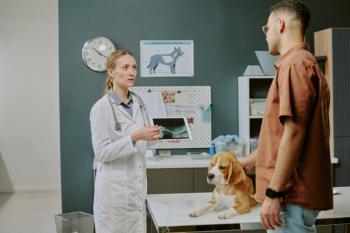
Life flights lift animals to safety
In the wake of this year's hurricanes, many went to extraordinary measures to transport pets so that overcrowded shelters in the Gulf Coast could take in more animals. Here are two examples:
In the wake of this year's hurricanes, many went to extraordinary measures to transport pets so that overcrowded shelters in the Gulf Coast could take in more animals. Here are two examples:
As part of "Operation Pet Lift," a Continental Airlines flight left Baton Rouge, La., on Sept. 11, with 80 pets on board, pictured below. "Some dogs were placed in cages in the cargo section while others rode in the passenger cabin, where they barked and wagged their tails," reports an article on
Flights were still taking pets out of the affected area in October. For example, The Cat Adoption Team (CAT), a nonprofit, no-kill cat shelter, and Banfield, The Pet Hospital, organized the transport of 40 homeless cats from New Orleans to Portland, Ore. The cats were originally transported from four shelters and rescue groups destroyed by the hurricane to the Humane Society of North Texas. On Oct. 3, the cats, pictured above waiting to board, loaded a Cessna 421B at Meacham Airport, Texas, for their eight-hour flight, stopping in Colorado Springs, Colo., to refuel. There, Drs. Lea Mayer and Serena Young from Banfield, The Pet Hospital, of Colorado Springs East performed a mid-flight checkup. When the cats arrived in Portland, they were transported to the CAT in Sherwood, Ore. Shelter personnel set up an isolation ward where they provided medical exams, vaccinations, FIV/FeLV testing, treatment for parasites, microchips, and ovariohysterectomies and neuters.
Newsletter
From exam room tips to practice management insights, get trusted veterinary news delivered straight to your inbox—subscribe to dvm360.




